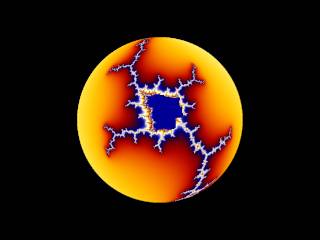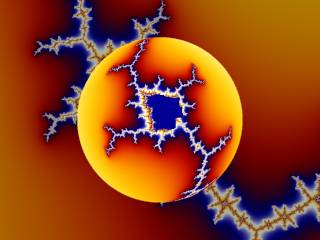
In the Mapping tab of the Layer Properties tool window, you can specify a solid color for each transformation. A transformation can use this color for special purposes.
For example, a transformation that maps a fractal onto a plane in 3D space also needs to color the area that is above or below the plane. This area is usually colored with the solid color.

This example shows a simple fractal mapped onto a sphere with the 3D Mapping transformation. The area outside the sphere is given the solid color (in this case black).
To change the solid color, click on the Solid Color swatch in the Mapping tab. By default, it is set to black, but you can choose any color. You can also change the opacity. By setting the opacity to 0, the solid color and thus the solid areas will become transparent, so the lower layers will become visible.

In effect, the transformation not only transforms the shape of the fractal, but also generates a mask for the layer.
Some transformations are only intended to create masks, and do not transform the pixels at all. You should use them with a transparent solid color. An example is the Clipping transformation.
Notes
Next: Standard transformations